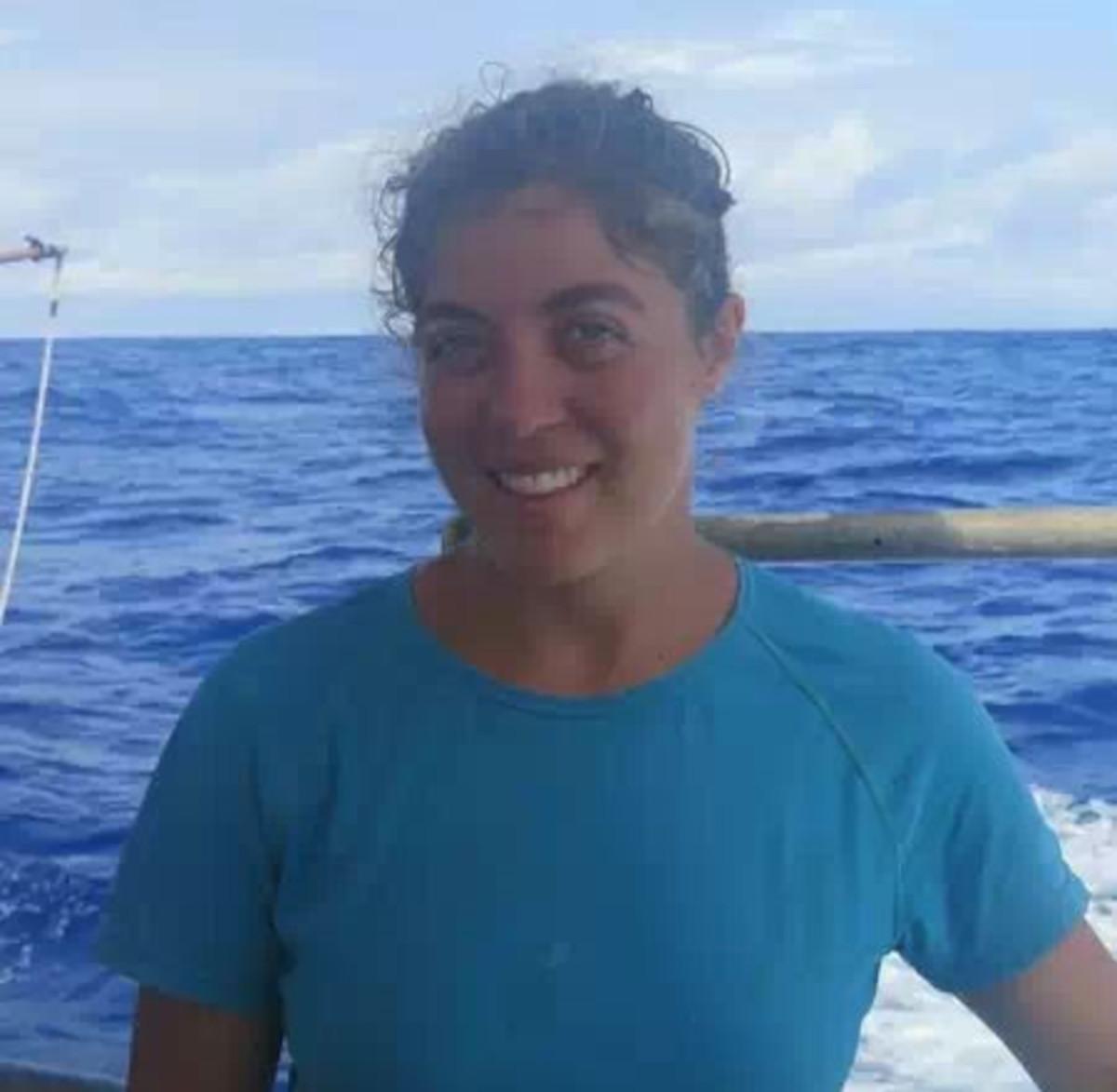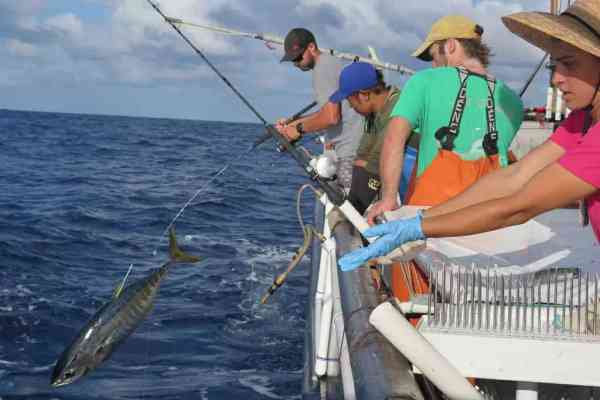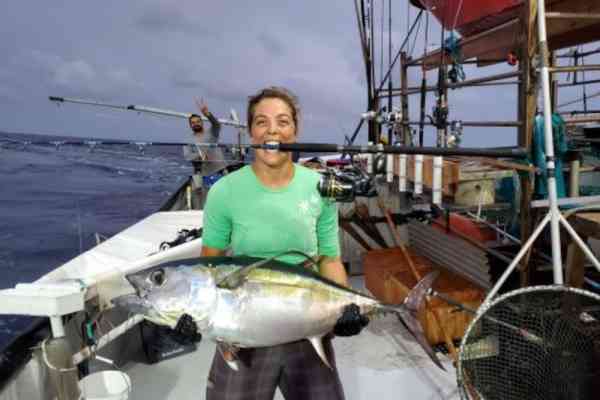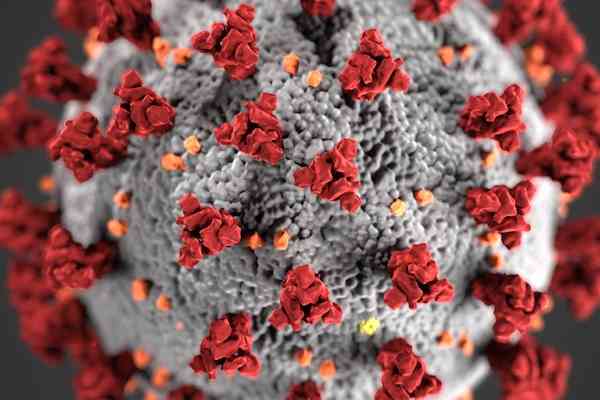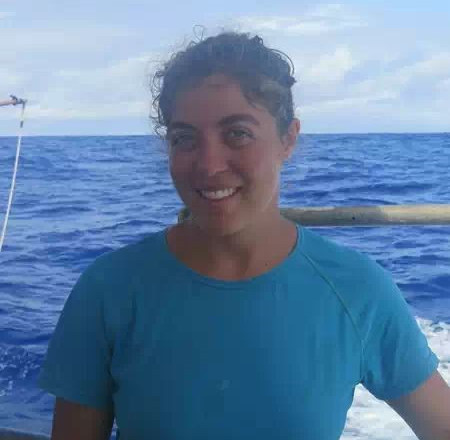 Napo'opo'o native, Giulia Anderson, is a young fisheries molecular geneticist who has suddenly found herself as an integral part of a 7-week research expedition to monitor the health of world’s largest tuna fishery, which is an activity that no other SPC scientist was not able to do this year, for the first time, due to the COVID-19 pandemic.
Napo'opo'o native, Giulia Anderson, is a young fisheries molecular geneticist who has suddenly found herself as an integral part of a 7-week research expedition to monitor the health of world’s largest tuna fishery, which is an activity that no other SPC scientist was not able to do this year, for the first time, due to the COVID-19 pandemic.
Giulia had only just landed her dream job with The Pacific Community (SPC) in New Caledonia before finding out she would be part of the 2020 Pacific Tuna Tagging expedition which departed from Honolulu on Saturday 15 August 2020, with a mostly Hawaii-based science team.
With most research and fisheries observer programmes currently suspended due to COVID-19, the 50-day expedition will not make any port calls in an effort to avoid any potential for COVID-19 transmission to the remote and vulnerable communities of the Pacific.
After only just completing her PhD in 2019 from Fiji's University of the South Pacific Giulia reflects on her hopes and concerns as she joins this scientific expedition across the vast Pacific Ocean to help boost our understanding of Pacific tuna stocks.
Scientists across the world continue to pursue essential research to the best of current abilities, even as they must also navigate the new COVID landscape. I am part of one of those research efforts: a tuna tagging cruise departing from Hawaii with a track through Kiribati waters, leaving port this weekend after overcoming a mountain of logistical odds, under the driving belief that the work of promoting sustainable fisheries and ocean health is worth taking on the seemingly insurmountable challenges.
The excitement gets a bit more personal, as well. As a young marine scientist, I started a position at SPC only in May, this year. The pre-COVID intention was to relocate to SPC’s headquarters in New Caledonia, which was quickly revised to working remotely from Hawaii until travel restrictions lifted. In true serendipity, I went from designing studies to be conducted on a theoretical cruise to enacting my own research onboard. In a year when productivity is slim at best, somehow planets aligned to give me an opportunity to oversee a project from inception to data interpretation.
For context, I completed my graduate studies in Fiji, and while I was there I met someone. Ironically, 2020 was going to be ‘our year’: first adult-paying jobs, getting married in May, moving internationally together, we have now been six months stuck in our respective countries, managing a few video calls a week-when the internet connection in Fiji is stable.
As a young, idealistic marine scientist, the significance of this particular research cruise continues to build. COVID limitations have hamstringed most fisheries observer programs, which place third party reporters on fishing vessels to record accurate catch volumes and influence stock management. However, fishing itself has not stopped. Data collected during the next seven weeks at sea will be some of the only direct observations made for 2020.
The world is laser-focused on bringing the COVID pandemic to a close, but marginalizing all those 2019 fears about climate change, global resource management, and human rights does not mean the global threats have gone away.
This year more than ever, it is healthy to recognize and appreciate moments of human creativity and resilience. Although it would be tempting fate to call the cruise a success before we return to port (not a game any sailor wants to play), the fact that we are leaving port at all should count as one of those moments worth celebrating.
As a marine scientist, it is heart-warming to see our ship leaving port, as a measure of Pacific-wide dedication to marine stewardship.’ Exceptional credit goes to the staff of the Pacific Community (SPC), the driving organization behind the expedition, who carried momentum through innumerable setbacks and rule changes.
That said, there is another side to consider when leaving land behind for so long. With four generations of family and hanai (Hawaiian culture that refers to the informal adoption of one person by another) on four islands, I carry the same cloud of concern as all other community members about COVID. Seven weeks is enough of time for the local situation to change, change again, change back to do a loop-de-loop. Communication from sea is possible but limited, which can be as a curse as a blessing in a time of extreme flux.
Ironically, my own family’s perspective (both those in Hawaii and Fiji) is: phew, at least we will know you are safe, bobbing around on the open sea for seven weeks. Can we come with?
Giulia Anderson, week 1 – Gutsy Lady
SPC Tuna tagging cruise, 2020
